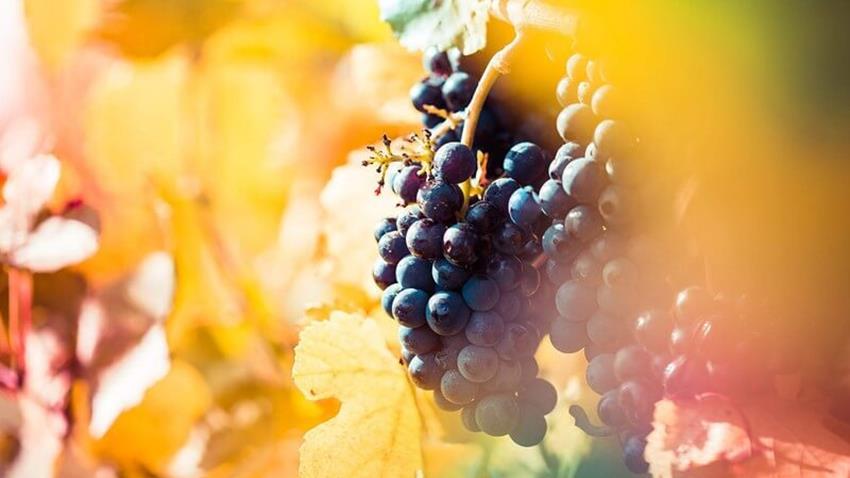
Understanding wine can really enhance the overall experience. Beyond dazzling at a dinner party, being able to spot the differences between wines can be fun. Tasting wines, and being able to compare and contrast, enables you to develop a far greater understanding of the nuances. Central to being able to compare wine is an ability to explain the features of each wine. That's why today we're looking at how to describe colour.
When you're tasting a wine, tilt your glass against a light background and take a closer look at the true colour of the wine, this can reveal a lot about its character before you even try it. The colour of the wine gives you clues about the grape used and how long it has been aged. The number of colours you can see in wine increases with its age. Being able to describe the colour of wine allows you to build up a memory bank, leading to more informed future judgements on what you have enjoyed, and what your customers would enjoy. We've summarised some of the key elements below;
Red Wine Colours
How does body affect the colour of red wines?
When evaluating the body of red wines, consider the opacity of the wine. Ask how much you can see through it. Full-bodied wines will be tough to see through as opposed to light-bodied reds such as Pinot Noir and Gamay.

Light-bodied

Medium-bodied

Full-bodied
How does the colour of red wine change with age?
Red wines get paler as they age. They also change colours from a purple hue when very young, through to a bright ruby-red, before taking on a more orangey-garnet colour as they age, finally turning brown when they are very old.

Young reds

Old reds
How do you describe the colour of red wine?
Young Pinot Noir wines are often considered Ruby red, as are Gamay wines. Syrah and Malbec can be regarded as Purple, while Sangoviese and older Pinot Noir wines could be called Garnet. That said, there are no strict rules at play.

Pale to Deep Ruby

Pale to Deep Purple

Pale to Deep Garnet
White Wine Colours
How does body affect the colour of white wines?
Light-bodied whites such as Pinot Grigio can be almost clear with very little colour. As the body increases, white wines develop a more vibrant colour, with full-bodied whites such as oaked chardonnay wines being much more opaque.

Light-bodied

Medium-bodied

Full-bodied
How does the colour of white wine change with age?
White wines range from watery-white, some with a greenish tinge, through to the bright yellow-golden colours that deepen and brown as they age. Most white wines aren't suited to long ageing, but it can be beneficial for sweet and full-bodied varieties.

Young whites

Old whites
How do you describe the colour of white wine?
Wines typically described as straw in colour include Vinho Verde, Albariño and Muscadet. Sauvignon Blanc and unoaked Chardonnay wines are often described as Yellow. Chenin Blanc, Pinot Grigio, and Viognier can be characterised as Gold.

Pale to Deep Straw

Pale to Deep Yellow

Pale to Deep Gold
Rosé Wine Colours
How does body affect the colour of rosé wines?
Light bodied rosés are almost clear with soft pink hues. The body of rosé wines varies as you move from dry and elegant rosés through to rich and fruity examples.

Light-bodied

Medium-bodied

Full-bodied
How does the colour of rosé wine change with age?
As Rosé wines age, vibrant colours become duller. All shades of rosé move towards a deep copper colour. Most rosé wines should be drunk while they are young, although some dry rosés have some potential for ageing of up to five years.

Young rosé

Old rosé
How do you describe the colour of rosé wine?
Perhaps in no other style of wine is the breadth of colours more pronounced than in Rosé, spanning from pale orange through to a vibrant pinky purple. Provence Rosé wines can be both a pale copper and a pale salmon. Spanish Rosé wines are usually Pink in colour, while Pinot Noir Rosé is often described as Copper.

Pale to Deep Copper

Pale to Deep Salmon

Pale to Deep Pink
Aged and Fortified Wine Colours
How does the colour of these wines change with age?
In the process of ageing, fortified wines often lose their rich, deep reds and browns. These wines can move towards a dull amber colour in much the same way as aged red wines.

Young fortified

Old fortified
How do you describe the colour of these wines?
Amber colours are typically associated with sherry, white ports, and Tokaji wines. Aged white wines, some sherries, and white ports are often termed Brown. Tawny is of course associated with Port, but the term can also apply to aged reds and Madeira.

Pale to Deep Amber

Pale to Deep Brown

Pale to Deep Tawny

